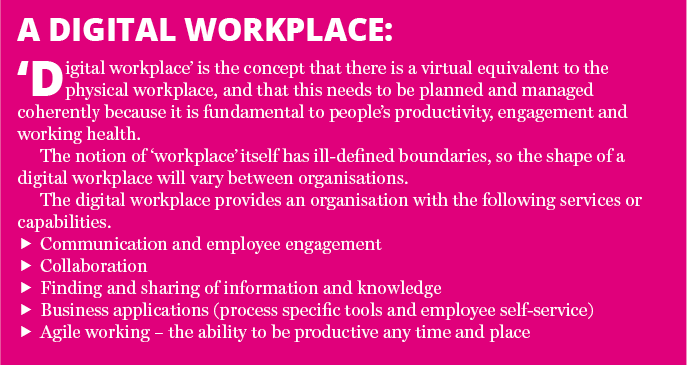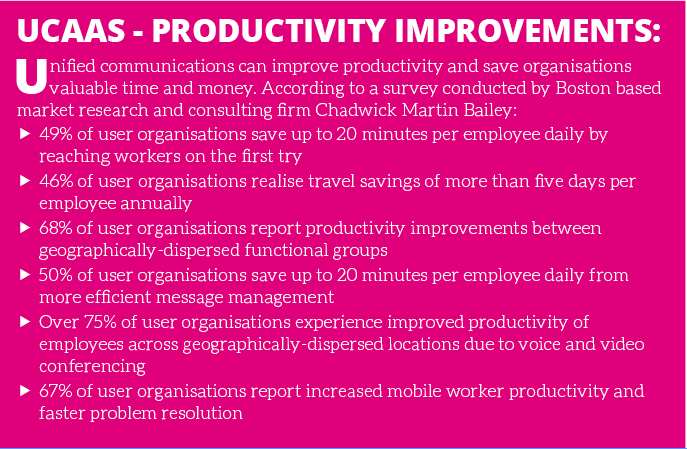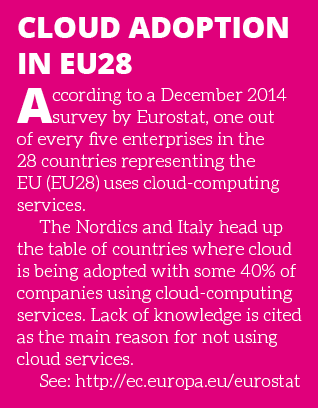
Comms Business talks to Shany Elkarat, Director, Managed Communications Portfolio at COLT about the user experience and management story and the benefits of deploying cloud UC. How it breaks down silos and encourages an environment of collaboration sharing and openness.
Controlling costs, retaining customers and gaining competitive advantage are universally seen as the three business requisites driving most organisations. Underlying these goals is the need for firms to develop and bring to market new products ever more quickly and provide customer service excellence to new and existing clients.
 Traditionally many organisations have worked in what we term as silos, a mind-set present when certain departments or sectors do not wish to share information with others in the same company.
Traditionally many organisations have worked in what we term as silos, a mind-set present when certain departments or sectors do not wish to share information with others in the same company.
In his book Silos, Politics and Turf Wars, author Patrick Lencioni notes that silos ‘waste resources, kill productivity, and jeopardise the achievement of goals’. Modern management thinking however advises business leaders to tear down silos by moving past behavioural problems and address the contextual issues that are present at the heart of the organisation so as to provide a ‘unified vision’ of their organisation.
Until recent times however the communication tools available to business to support this break out from the limiting silo effect into an increased productivity environment of using unified communications (UC) have themselves been cumbersome, inflexible, difficult to implement and use and above all, very costly to deploy.
This is now no longer the case following the widespread introduction of cloud based computing and communications. Here, applications that were traditionally located in servers based in the user premises are instead supplied to users via networks connected to servers deployed in remote data centres.
Users of the cloud based delivery model for applications benefit from this in a number of ways:
1. The applications are provided as an operational expense (OPEX) and generally as a per user per product basis as opposed to a large up-front capital expenditure (CAPEX) project plus on-going maintenance/service charges throughout the duration of the contract.
2. Network connectivity can often be bundled in with the cloud OPEX costs instead of becoming an additional line item on every bill.
3. User flexibility is enhanced through only being charged for the services you use rather than total capability of customer premises (CPE) deployment. For example, were you to purchase a 500 seat call centre application, once the user had paid for the on premise installation a service charge appropriate to a 500 user systems would be levied monthly or yearly for the remainder of the contract period – say five to seven years typically. If the user downscaled the call centre to 300 seats in year two the CAPEX on premise solution cost would still have to be paid for 500 seats. In a cloud deployment the cost would reduce to that appropriate for just 300 seats. Equally the cloud-based solutions could be scaled up to 600 seats at an on-going cost for the additional 100 users rather than CAPEX cost for further equipment to be installed.
 4. Typically, users of CAPEX based application deployments are faced with software upgrade costs on a regular basis. These can be substantial if you want to keep the product current. With a cloud based deployment the product you receive is maintained at the latest software level at the data centre throughout the lifetime of the client’s use at no additional cost.
4. Typically, users of CAPEX based application deployments are faced with software upgrade costs on a regular basis. These can be substantial if you want to keep the product current. With a cloud based deployment the product you receive is maintained at the latest software level at the data centre throughout the lifetime of the client’s use at no additional cost.
Whilst these can be viewed almost as the ‘generic’ benefits of using cloud based computing and communications it is equally as important to examine how using unified communications as a cloud based service (UCaaS) can provide increased productivity to an organisation by increasing opportunities for greater collaboration between work groups.
Firstly let’s look at the typical applications a UCaaS solution can bring to an organisation in an all encompassing and holistic solution.
Stand-alone applications are the equivalent of working in silos. Just as company silos need to come together and work for the betterment of the business as a whole so do computing and communications applications in an effective UCaaS deployment.
Through a single user interface, applications that should be considered as central to this deployment would include; voice telephony, SIP based trunking, voicemail and collaboration applications such as chat, presence information, desk to desk video calls and audio conferencing.
The latest UCaaS solutions are using WebRTC for voice and video call set up which means no specific additional user equipment is required – just a compatible web browser. As well as reducing cost considerations to practically zero this also benefits the increasingly mobile worker who can access these features easily from a smartphone, tablet or laptop computer.
The Collaboration Effect:
As we noted earlier, management today need to have a unified vision for their organisation which in turn necessitates ensuring all users are willing to adopt new UCaaS tools in order to enable collaboration.
Getting maximum productivity out of knowledge workers, regardless of where they are, is critical to maintaining competitive advantage.
 Companies therefore need their critical workforces to perform smarter, faster and more productively. Achieving that goal requires embedding collaborative technologies deep into processes and incentivising collaborative behaviours—ultimately transforming the way organisations turn knowledge into action. Collaboration platforms should do more than help employees talk about their work; they should create new ways for employees to do their work.
Companies therefore need their critical workforces to perform smarter, faster and more productively. Achieving that goal requires embedding collaborative technologies deep into processes and incentivising collaborative behaviours—ultimately transforming the way organisations turn knowledge into action. Collaboration platforms should do more than help employees talk about their work; they should create new ways for employees to do their work.
Meetings in the office can be great when everyone is based there but in a world where today organisations increasingly tend to have dispersed workforces, whether in different offices or working from home as well as an international presence, with employees who also need to be engaged in decision making.
There is an increasing demand in business for ad hoc meetings. This is being driven by the rise of Generation Y, ‘the Millennials’, in the workplace. Those born after the 1970s typically want it all and want it now. Waiting around for a meeting that is unlikely to provide what they expect must be avoided at all costs. Instead they prefer on-the-spot collaboration as a means to save time and money, and more efficient and effective collaboration tools are facilitating this demand.
Self Supply…
A feature now firmly established in the supply of cloud based applications and services is the self-service provisioning platform or portal. Almost universally presented as a web browser based user interface for familiarity, the self-service portal allows authorised users to change the configurations of their services as well as provision new users or delete services no longer needed.
Such portals have many benefits for both the user and service provider.
Linked to billing platforms, the portal ensures users are only charged for the services they use and for service providers reduced deployment costs keep overall costs competitive for users.
Ed Says…
New analysis from Frost & Sullivan, 2015 EMEA Contact Center Systems Buyers Guide (See www.frost.com/mb50), finds that consumer preference for self-education and self-help, coupled with the prolific way they collaborate and broadcast their thoughts, ideas, compliments and complaints about brands on social media, is forcing a sea change within the contact centre industry.
Vendors and end users alike are adapting to new cloud based solutions and interaction channels that provide richer self-service capabilities.
